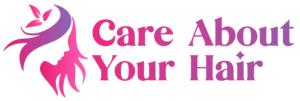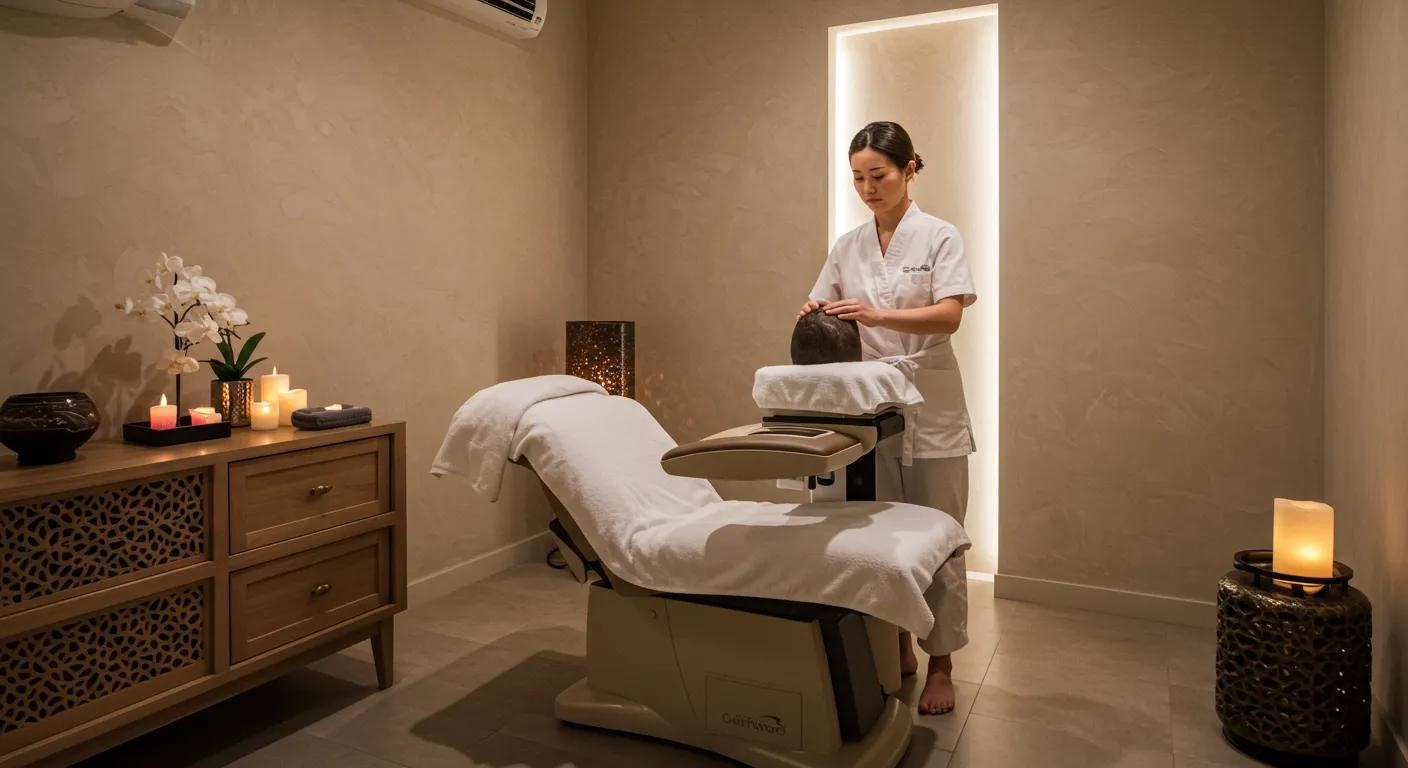Table of Contents
- What Are the Key Benefits of Scalp Massage for Hair Growth?
- How Do You Perform Effective Scalp Massage Techniques for Hair Growth?
- What Are the Best Products to Enhance Scalp Massage for Hair Growth?
- How Does Scalp Massage Help With Common Scalp Conditions Affecting Hair Growth?
- What Do Experts Say About the Benefits of Scalp Massage for Hair Growth?
- How Often Should You Massage Your Scalp for Optimal Hair Growth Results?
- What Are Common Questions About Scalp Massage and Hair Growth?
- Frequently Asked Questions
- Final Thoughts
This blog post may contain affiliate links. As an Amazon Associate I earn from qualifying purchases.
The Benefits of Scalp Massage for Hair Growth and Health: How It Supports Natural Hair Care and Wellness
Scalp massage is an age-old practice gaining popularity among hair care professionals and enthusiasts as a natural way to promote hair growth and improve scalp health. By reducing stress, increasing blood circulation, and nourishing hair follicles, scalp massage complements both conventional treatments and natural hair care routines. Whether looking to invigorate the scalp, boost hair density, or simply enjoy a relaxing self-care ritual, understanding the science behind scalp massage is essential. This article covers its key benefits, effective techniques, recommended products, the impact on common scalp conditions, expert opinions, and practical DIY tips for incorporating scalp massage into your routine.
What Are the Key Benefits of Scalp Massage for Hair Growth?
Scalp massage offers numerous advantages for hair growth and overall scalp health. Regular stimulation improves blood circulation, ensuring that oxygen and nutrients reach hair follicles, thereby accelerating the hair growth cycle and supporting the regeneration of weakened follicles.
How Does Scalp Massage Increase Blood Flow to Stimulate Hair Follicles?
Applying light to moderate circular pressure on the scalp dilates capillaries and enhances blood flow. This increased circulation supports the metabolic activity of hair follicles. The physical stimulation may also boost the production of growth factors (such as fibroblast growth factors), which help regenerate hair by promoting cell division. Consistent massage, especially when used with nutrient-rich formulations, can reduce hair fall and encourage new growth.
In What Ways Does Scalp Massage Improve Scalp Health and Hair Thickness?
Regular massage helps remove dead skin cells and product residue, reducing dandruff and preventing pore blockages. It also stimulates the sebaceous glands to release natural oils, balancing scalp moisture. Improved circulation strengthens hair strands, reducing breakage and increasing hair volume. Many users report fuller, shinier hair with reduced breakage as a cumulative result of these benefits.
How Can Scalp Massage Reduce Stress to Support Hair Growth?
Stress can disrupt hormonal balance and trigger hair loss. Scalp massage soothes tension and promotes the release of endorphins, reducing stress and cortisol levels. Improved relaxation enhances sleep quality and emotional well-being, which are vital for cellular regeneration, including that of hair follicles. Regular massage, therefore, helps create an optimal environment for hair growth while managing stress-induced hair loss.
How Do You Perform Effective Scalp Massage Techniques for Hair Growth?
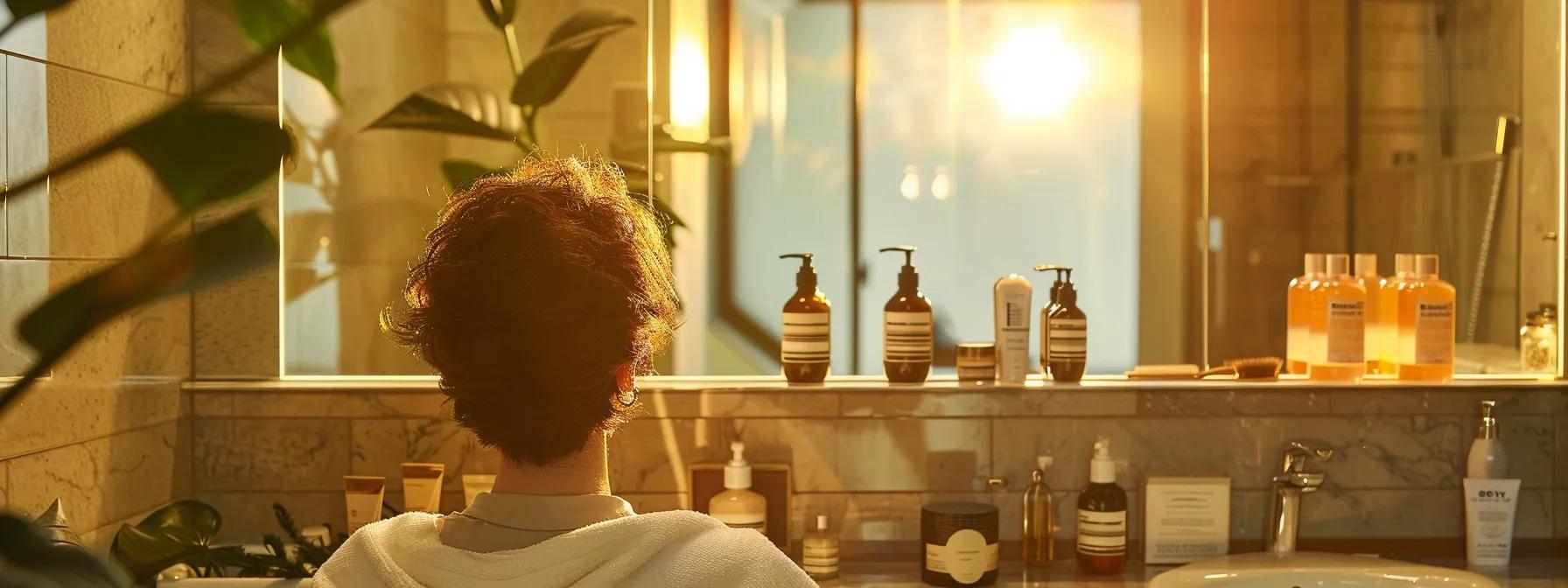
Consistent and proper scalp massage techniques are key to reaping its benefits. The goal is to stimulate blood flow while relieving tension evenly across the scalp with motions that are easy to perform at home.
What Are the Step-by-Step Methods to Massage Your Scalp Properly?
A practical approach to scalp massage includes these steps:
1. Section Your Hair: Part your hair to fully expose the scalp.
2. Apply Oil: Use a few drops of a chosen oil (like rosemary or coconut oil) to improve glide and nourishment.
3. Massage in Circles: With clean fingertips, use circular motions starting at the hairline and moving toward the crown, applying light to moderate pressure.
4. Target Key Areas: Pay extra attention to temples and the nape of the neck.
5. Finish with Tapping: Gently tap the scalp to stimulate nerve endings.
Daily sessions for 5–10 minutes can lead to noticeable improvements in circulation and hair follicle stimulation.
Which Massage Techniques Best Stimulate Hair Follicles and Scalp Health?
Combine various techniques to maximize benefits: – Circular Motions: Ideal for boosting blood flow. – Upward Strokes: Help lift the scalp to improve oxygenation. – Gentle Tapping: Awakens dormant follicles. – Light Stretching: Enhances scalp flexibility and reduces tension.
Adjust pressure based on scalp sensitivity, using firmer strokes for areas with thinning hair and lighter strokes on delicate skin.
How Can You Incorporate Essential Oils Into Your Scalp Massage Routine?
Essential oils like rosemary, lavender, and peppermint add extra benefits. Dilute a few drops in a carrier oil (coconut or jojoba) before massaging. This blend not only makes the massage smoother but also delivers antimicrobial, anti-inflammatory, and stimulating properties that improve scalp hydration and nutrient absorption.
What Are the Best Products to Enhance Scalp Massage for Hair Growth?
Enhance your scalp massage routine with products that boost its effects. Targeted tools and formulations ensure even distribution of active ingredients and stimulate the scalp more effectively.
Which Scalp Massagers Are Most Effective for Hair Growth and Thickness?
Modern scalp massagers, made from silicone bristles or flexible nets, mimic the natural movement of fingertips while ensuring consistent pressure. Many devices now offer adjustable settings or vibration modes for targeted treatments, similar to professional scalp stimulation in salons. These massagers, combined with manual techniques, help improve circulation and increase hair density while offering a stress-relieving experience.
What Essential Oils Promote Hair Growth When Used in Scalp Massage?
Key essential oils include: – Rosemary Oil: Stimulates circulation and enhances hair thickness. – Lavender Oil: Provides anti-inflammatory and calming benefits. – Peppermint Oil: Offers a cooling sensation while boosting blood flow. – Others such as cedarwood and tea tree oil help balance oil production and provide antimicrobial benefits. Always dilute essential oils with a carrier oil to prevent irritation.
How Do Natural Hair Care Products Complement Scalp Massage Benefits?
Natural products like organic shampoos, conditioners, and serums free from harsh chemicals work synergistically with scalp massage. Ingredients such as biotin, vitamin E, and antioxidants support follicle regeneration, reduce inflammation, and allow deeper nutrient penetration. This combination enhances overall scalp health and fortifies hair strands, leading to stronger, more resilient hair.
How Does Scalp Massage Help With Common Scalp Conditions Affecting Hair Growth?
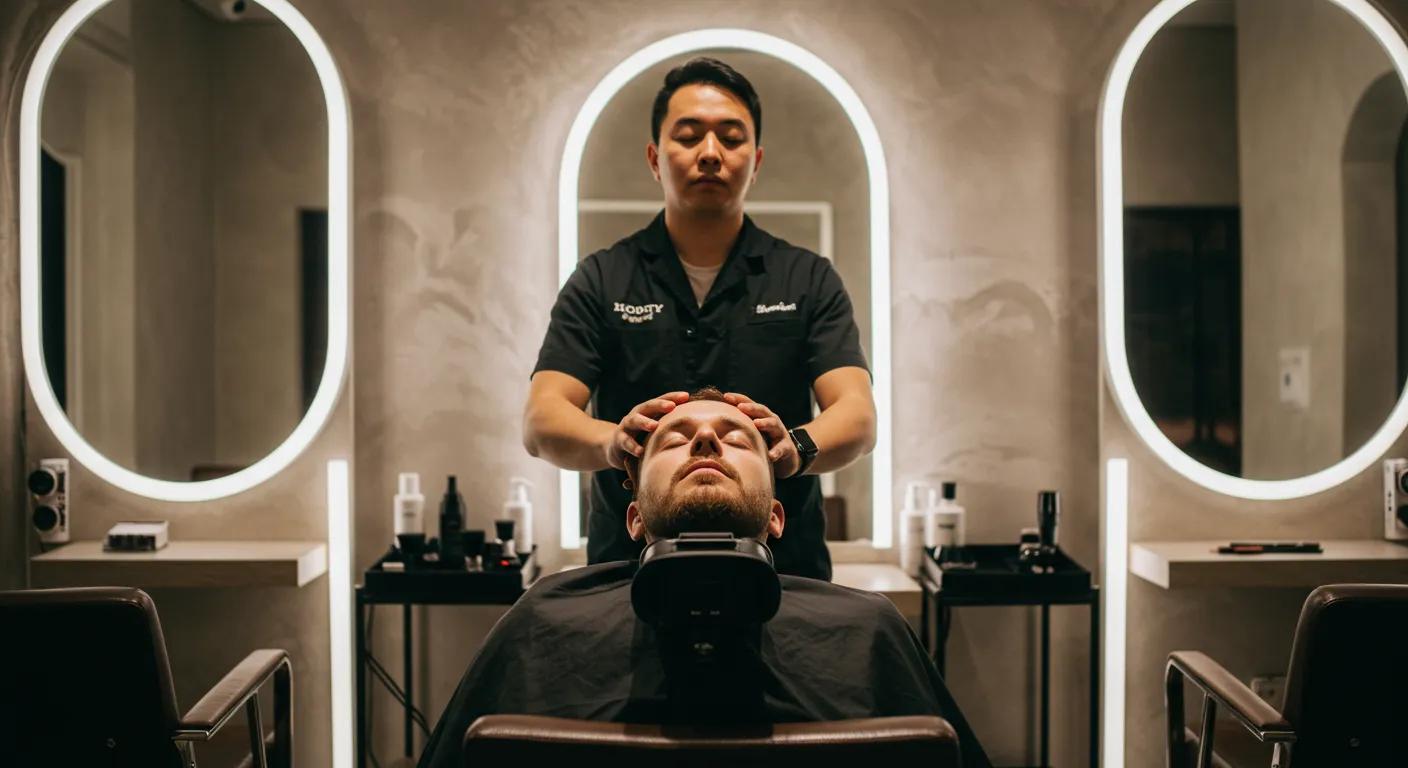
Scalp conditions like dandruff, dryness, oiliness, and mild inflammation can hinder hair growth. Scalp massage naturally improves blood flow and balances the scalp’s microenvironment, addressing these issues effectively.
Can Scalp Massage Reduce Hair Loss and Support Regrowth?
By enhancing blood flow and stimulating growth factor production, scalp massage nourishes hair roots and mitigates premature shedding. It combats stress-induced conditions, such as telogen effluvium, and helps sustain active hair cycles, thereby reducing overall hair loss.
How Does Scalp Massage Alleviate Dandruff and Improve Scalp Health?
Regular massage exfoliates the scalp, removing dead skin cells and excess oil that contribute to dandruff. Improved circulation and the use of antimicrobial essential oils contribute to a healthier scalp environment, reducing flakiness and balancing moisture levels.
What Are the Benefits of Scalp Massage for Dry and Oily Scalp Types?
For dry scalps, massage with nourishing oils helps lock in moisture and stimulates balanced sebum production. For oily scalps, it helps break down excess oils and unclog follicles, reducing greasiness and irritation. Overall, the mechanical stimulation regulates oil production and supports a balanced, healthy scalp regardless of type.
What Do Experts Say About the Benefits of Scalp Massage for Hair Growth?
Experts—including dermatologists, trichologists, and hair care professionals—advocate for scalp massage as a complementary treatment for hair loss and thinning. They emphasize its ability to stimulate follicle activity and improve overall scalp health.
What Insights Do Dermatologists Provide on Scalp Massage and Hair Health?
Dermatologists note that improved microcirculation from scalp massage ensures a better supply of oxygen and nutrients to follicles, supporting the hair growth cycle. They also emphasize that the physical stimulation promotes growth factor release, which is particularly beneficial for those experiencing mild to moderate thinning. Many incorporate massage into treatment plans for conditions like androgenetic alopecia and telogen effluvium.
How Do Trichologists Recommend Using Scalp Massage for Hair Loss Prevention?
Trichologists stress a holistic approach that includes regular scalp activation. They recommend incorporating massage into daily or weekly routines to prevent follicle miniaturization and reduce stress hormones that trigger hair shedding. They also suggest using natural extracts and essential oil blends to amplify the benefits.
What Scientific Studies Support Scalp Massage for Hair Growth?
Various studies have indicated that regular scalp massage can lead to a significant increase in hair density. Controlled research has shown improvements in hair thickness—up to around 30% in some cases—attributed to better blood flow, improved scalp health, and increased growth factor release. While individual results may vary, the data supports including scalp massage as part of a comprehensive hair care regimen.
How Often Should You Massage Your Scalp for Optimal Hair Growth Results?
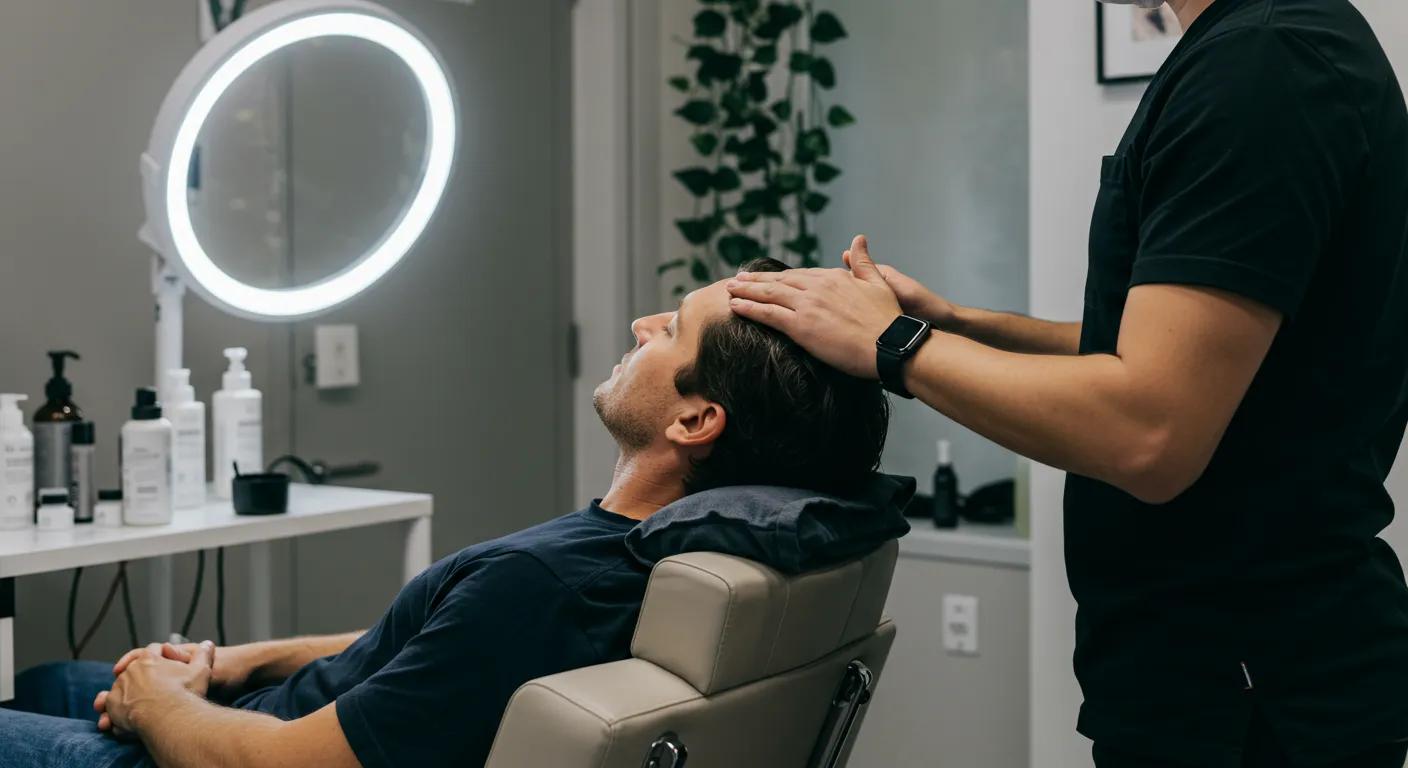
The effectiveness of scalp massage depends on consistent practice and proper technique. Establishing a regular schedule is essential to harness its long-term benefits.
What Is the Recommended Duration and Frequency for Scalp Massage?
Experts generally recommend a daily scalp massage lasting between 5 to 10 minutes. This brief session is enough to stimulate blood flow and trigger hair follicle activity without overburdening the scalp. Even a few minutes daily can result in significant cumulative benefits, as sustained circulation improvements help foster healthier hair growth.
How Can You Create a DIY Scalp Massage Routine That Fits Your Lifestyle?
Develop a routine that works within your daily schedule: – Select a Time: Choose morning or evening sessions when you can relax. – Prepare Your Scalp: Wash your hands and, if desired, apply a favorite essential oil blend mixed with a carrier oil. – Follow a Simple Routine: Start with a brief warm-up, proceed to a deep massage using circular, tapping, and upward strokes, and finish with gentle tapping. This practical routine, whether performed at home, in the shower, or during a break, can seamlessly integrate into your lifestyle and promote long-term scalp and hair health.
What Are Common Questions About Scalp Massage and Hair Growth?
As interest grows, several common questions arise about the practice, its techniques, and the products used.
Does Scalp Massage Really Help Hair Growth?
Research and expert consensus confirm that scalp massage supports hair growth by improving blood circulation, reducing stress, and creating a healthier scalp environment. While results vary individually, many users report increased hair density and thickness after several weeks of consistent practice.
What Kind of Oils Are Best for Scalp Massage?
Essential oils such as rosemary, lavender, peppermint, and cedarwood are popular for their stimulating and antimicrobial properties. When diluted with carrier oils like coconut, jojoba, or argan oil, they enhance glide and provide nourishment while also offering anti-inflammatory benefits.
Can Scalp Massage Prevent Hair Loss or Thinning?
Regular scalp massage helps maintain a healthy scalp environment and reduces factors that weaken hair follicles. By boosting circulation and reducing stress hormones, it can help prevent hair loss and support continuous hair growth.
Frequently Asked Questions
Q: How long does it take to see the benefits of scalp massage for hair growth? A: Improvements in hair health and reduced shedding are often noticed within 6–12 weeks of consistent daily massage, although individual results may vary.
Q: Is scalp massage safe to perform daily? A: Yes, when performed with gentle pressure and proper techniques, daily scalp massage is safe. It is advisable to conduct a patch test with oils, and consult a dermatologist if you have pre-existing scalp conditions.
Q: Can I use a scalp massager instead of doing it by hand? A: Absolutely. Devices featuring silicone bristles or vibration can provide effective, consistent stimulation and complement manual techniques.
Q: Do I need to wash my hair immediately after a scalp massage? A: It is best to allow the oils and benefits to absorb for at least 20–30 minutes before washing to ensure optimal nutrient penetration.
Q: Can essential oils cause irritation during scalp massage? A: When properly diluted with a carrier oil, essential oils are generally safe. However, testing a small amount first is important for sensitive skin.
Q: Are there any contraindications for scalp massage? A: Individuals with severe scalp conditions, open wounds, or infections should avoid massage until resolved. Consultation with a healthcare professional is recommended if uncertain.
Q: How does scalp massage interact with hair products like shampoo or leave-in conditioners? A: Scalp massage enhances the absorption of hair products by loosening dirt and sebum. When combined with leave-in conditioners, it helps distribute active ingredients evenly, maximizing benefits.
Final Thoughts
Scalp massage is a natural, non-invasive method to boost hair growth and improve scalp health by enhancing circulation, reducing stress, and balancing the scalp environment. With a routine that incorporates proven techniques, essential oil blends, and supportive products, individuals can experience thicker, healthier hair and a revitalized scalp. Expert opinions and scientific studies affirm that regular scalp massage is a valuable addition to any comprehensive hair care regimen, nurturing hair growth and contributing to overall well-being.
